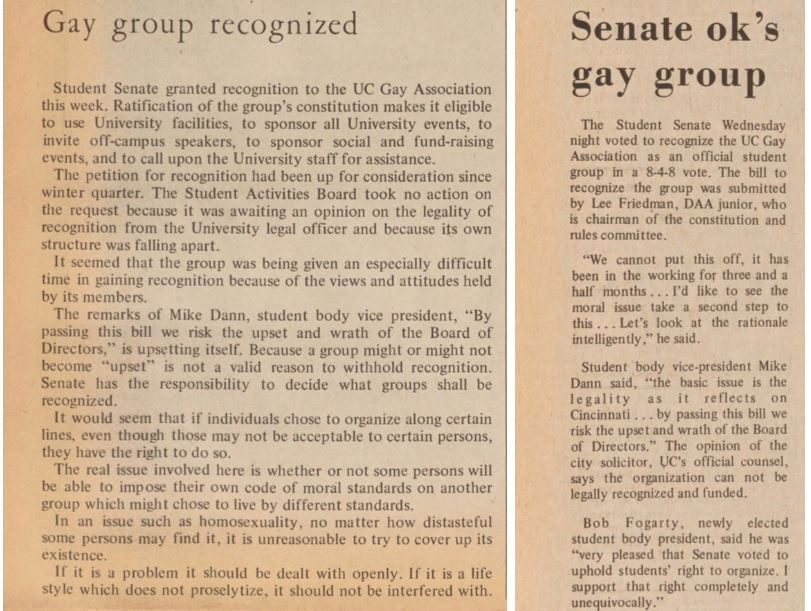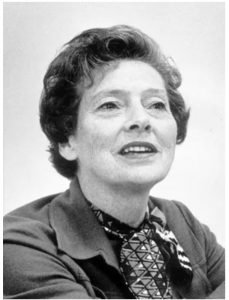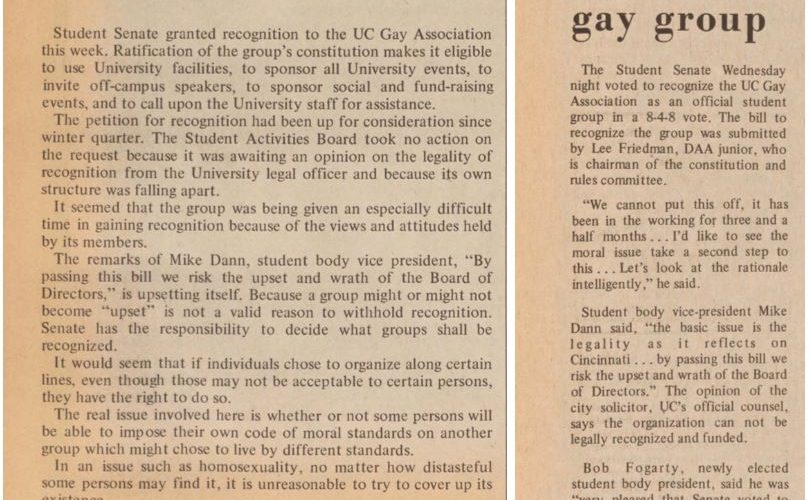Support for Gay rights on campus has improved throughout the years, and as recently as 2015 UC made major changes to better the lives of LGBT students on campus. The Audre Lorde housing committee created housing for students who “identify as transgender, genderqueer or who do not feel represented within the gender binary.” The University made not only a place to live, but a community for people who wish to be immersed in social justice. It’s great to see changes like this at UC, but Audre Lorde, an important figure in the struggle for LGBTQ rights at UC and throughout Cincinnati, is an important reminder of the Cincinnati’s fraught LGBTQ history.
LGBTQ rights at UC and within the Cincinnati area in the 70s were a hot topic. LGBTQ people were becoming more visible thanks to the progressive atmosphere of the 70s, and many organizations were founded in Cincinnati and at UC itself that helped advance the cause of gay rights.
1973 was a good year for gay rights on campus. For the first time, UC’s senate approved the formation of gay groups at UC. The UC Gay Association could finally use campus facilities, sponsor university events, fund raise, and invite speakers from on or off-campus. The senate, made up of UC students, reflected attitudes of acceptance among UC students. However, members of the senate noted that by passing the bill students were “[risking] the wrath of the Board of Directors.” An article in The News Record titled “Gay group recognized” states that “In an issue such as homosexuality, no matter how distasteful some persons may find it, it is unreasonable to try to cover up its existence. … it should not be interfered with.” While faculty members held negative opinions about gay rights on campus, the student body held indifferent or even wholly positive opinions toward their LGBTQ peers.


In 1973, Cincinnati had its first pride parade. The event, although much smaller than modern pride parades, was nonetheless an important to Cincinnati’s history as it marked the first large-scale organization of LGBTQ individuals in the city. Thanks to the Cincinnati Gay Community––or CGC––advertising in the UC newspaper, many UC students attended the march. After this first march, the parade and its members disbanded until the Greater Cincinnati Gay Coalition brought it back for the 10th anniversary of stonewall in 1979.”Cincy Pride has been held every year since 1979. In the same year, Bobbie Sterne, the first full-term female Cincinnati mayor, signed a proposition declaring “Lesbian/Gay Pride Day.”
The ’70s offered a period of growth for LGBTQ people and organizations in Cincinnati. Thanks to pioneers of the movement who pushed for recognition early on, LGBTQ students at UC can now enjoy the same rights as other students. However, advancement of civil rights is not a linear path, and the 1990s marked another period of conflict––and growth––for UC students.
This post was created by: Emily, Francesca, Madison, Sachiko, and Emma.

